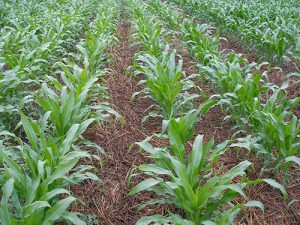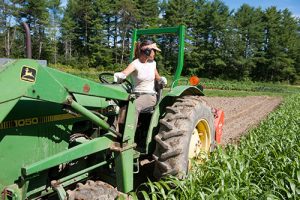Cows and Crops, January 2016

By Rick Kersbergen, Extension Professor, University of Maine Cooperative Extension, richard.kersbergen@maine.edu
Welcome to the New Year! Please help us reach more dairy farmers and your employees! Cows and Crops is now available in a new online format. To receive email announcements when new issues become available, fill out our Cows & Crops Subscription Form.
In This Issue
- Save the Date:
- March 15, 2016: Maine Dairy Seminar — Elks Lodge, Waterville; Keynote Speaker: Gabriella Varga, Professor Penn State.
- Jan 12, 13, & 14, 2016: Agricultural Trade Show — Pesticide and Nutrient Management Re-certification Credits
- New Thoughts On An Old Question: Should We Feed Forage To Calves? (Penn State Extension)
- No-till Corn Silage Production in the Northeast: What Have We Learned to Date?
- The “Dairy Dirty Dozen”
Nutrient Management Re-certification Credits
75th Annual Maine Agricultural Trades Show
January 12 & 13, 2016
Waldo Room, Civic Center, Augusta, Maine
Tuesday:
(Each one-hour talk qualifies for 1 Nutrient Management Recertification Credit)
- 10:00: Getting Grounded – Farm Fields, Forests, and Soils. What you should know about the most important asset of a farm before purchasing or expanding the farm, including “beyond the field edge.” David P. Rocque, State Soil Scientist, and Andy Shultz, Landowner Outreach Forester, Maine Department of Agriculture, Conservation and Forestry.
- 11:00: Practical Biosecurity on the Farm. Dr. Michele Walsh, DVM, State Veterinarian, Maine Department of Agriculture, Conservation and Forestry.
- 2:00: Understanding Food Allergens in Food Products. Dr. Balunkeswar (Balu) Nayak, PhD, Assistant Professor of Food Processing, School of Food & Agriculture, University of Maine.
Wednesday:
(Each one-hour talk qualifies for 1 Nutrient Management Recertification Credit)
- 10:00: Pastures and Nutrient Management Plans – How Should They be Handled? Rick Kersbergen, Extension Educator and Professor, University of Maine Cooperative Extension.
- 11:00: Soils Under Cover! – Improving Soil Health through Cover Cropping and Reduced Tillage in Silage Corn. Rick Kersbergen, Extension Educator and Professor, University of Maine Cooperative Extension; Caragh B. Fitzgerald, Extension Educator and Professor, University of Maine Cooperative Extension; Laura Suomi-Lecker, Technical Director, Somerset County Soil & Water Conservation District.
- 1:00: Understanding Soil Health Indicators. Bruce Hoskins, Soil Scientist and Director, University of Maine Soil Testing and Analytical Laboratory.
- 2:00: Setting-up an On-Farm Organics Collection Center. Mark A. King, Environmental Specialist, Maine Department of Environmental Protection Sustainability Unit.
No-till Corn Silage Production in the Northeast: What Have We Learned to Date?
 Quite a few corn silage producers have switched to no-till corn production with positive benefits to their farm operations. As a quick summary, here are some of our findings from projects in Maine and Vermont.
Quite a few corn silage producers have switched to no-till corn production with positive benefits to their farm operations. As a quick summary, here are some of our findings from projects in Maine and Vermont.
- Producers have saved an average of $50 per acre in fuel and labor costs using no-till planting techniques. Quicker planting also means more chances for an earlier harvest of first cutting hay/haylage!
- Land that had never been in corn production has been rotated into corn without tillage. The rotation effect has resulted in an average yield boost of about 2 tons of corn silage per acre.
- Most producers who grow using no-till production also utilize cover crops in the system providing an average yield boost of 2 tons per acre. The cover crops also assist in reduced soil loss and improved/reduced fertilizer requirements for the following year. Most farms use winter rye as the cover crop of choice for late season vigor and cost. Our research from University of Massachusetts data collected as part of this project indicates that cover crops recover and supply at least 30 pounds of N per acre to the succeeding crop.
- Improved soil conditions with no-till and cover crops! We have seen improved soil health including better water management (both improved drainage and also improved drought tolerance).
If you are interested in adopting no-till corn production on your farm, please let me know. I am starting a new project and need 2-3 more farms that are at the initial transition to no-till to further document some of our findings.
Check out the report from our initial findings if you are interested: SARE Report.
Rick Kersbergen
richard.kersbergen@maine.edu
The “Dairy Dirty Dozen”
Take precautions now to prevent injuries on your farm! University of Wisconsin — Extension posted OSHA’s “Dairy Dozen” regarding recent “Local Emphasis Program” initiatives by OSHA and inspections on dairy farms. If you want a review of your farm’s safety practices or some documented training for your employees on some of these practices, contact Rick Kersbergen at richard.kersbergen@maine.edu.
1) Manure storage facilities and collection structures, where farm vehicles are operated near waste storage facilities without control measures to prevent accidental entry of people or machinery, or where there is the risk of exposure or inhalation of manure gases by employees.
2) Animal handling/worker positioning, identifying areas, and techniques where people are exposed to the risk of crushing when moving or handling livestock, as well as the potential of serious needlesticks where farm workers or veterinarians utilize needles to administer medications without proper animal restraints.
3) Electrical systems, where electrocution and electrical shock hazards are a risk from direct contact with improperly installed, maintained or damaged electrical systems, or from indirect contact with overhead or buried power lines with farm equipment.
4) Skid-steer loader operation, where employees not properly trained on operating, servicing or maintaining skid-steer loaders and failure by employees to use appropriate safety features.
 5) Tractor operation, where employers are required to provide tractors with ROPS and seatbelts; and employees must be trained regarding how to properly operate, service or maintain tractors on an annual basis.
5) Tractor operation, where employers are required to provide tractors with ROPS and seatbelts; and employees must be trained regarding how to properly operate, service or maintain tractors on an annual basis.
6) Proper guarding of power take-off (PTO) shafts and other related components of field and farmstead equipment.
7) Proper guarding of other power transmission and functional components on farm field and farmstead equipment, and proof of annual training of employee on machinery.
8) Hazardous energy control while performing servicing and maintenance on equipment, where employers must provide a means to prevent one person from starting a piece of equipment while another person is performing maintenance or servicing.
9) Hazard communication, including a written inventory of chemicals, (materials) safety data sheets (M)SDS, training of employees and evaluation of personal protective equipment.
10) A written program that includes an assessment of confined spaces and identifies potential hazards (e.g. grain storage bins, vertical silos, hoppers, milk vessels or tanks, manure collection systems), and addresses safe entry procedures and rescue requirements.
11) A written program that includes an assessment of horizontal bunker silos and identifies potential hazards when employees perform “facing,” when placing or removing protective covering and anchoring systems.
12) An evaluation of hearing loss hazards due to noise when working around or operating agricultural equipment.
